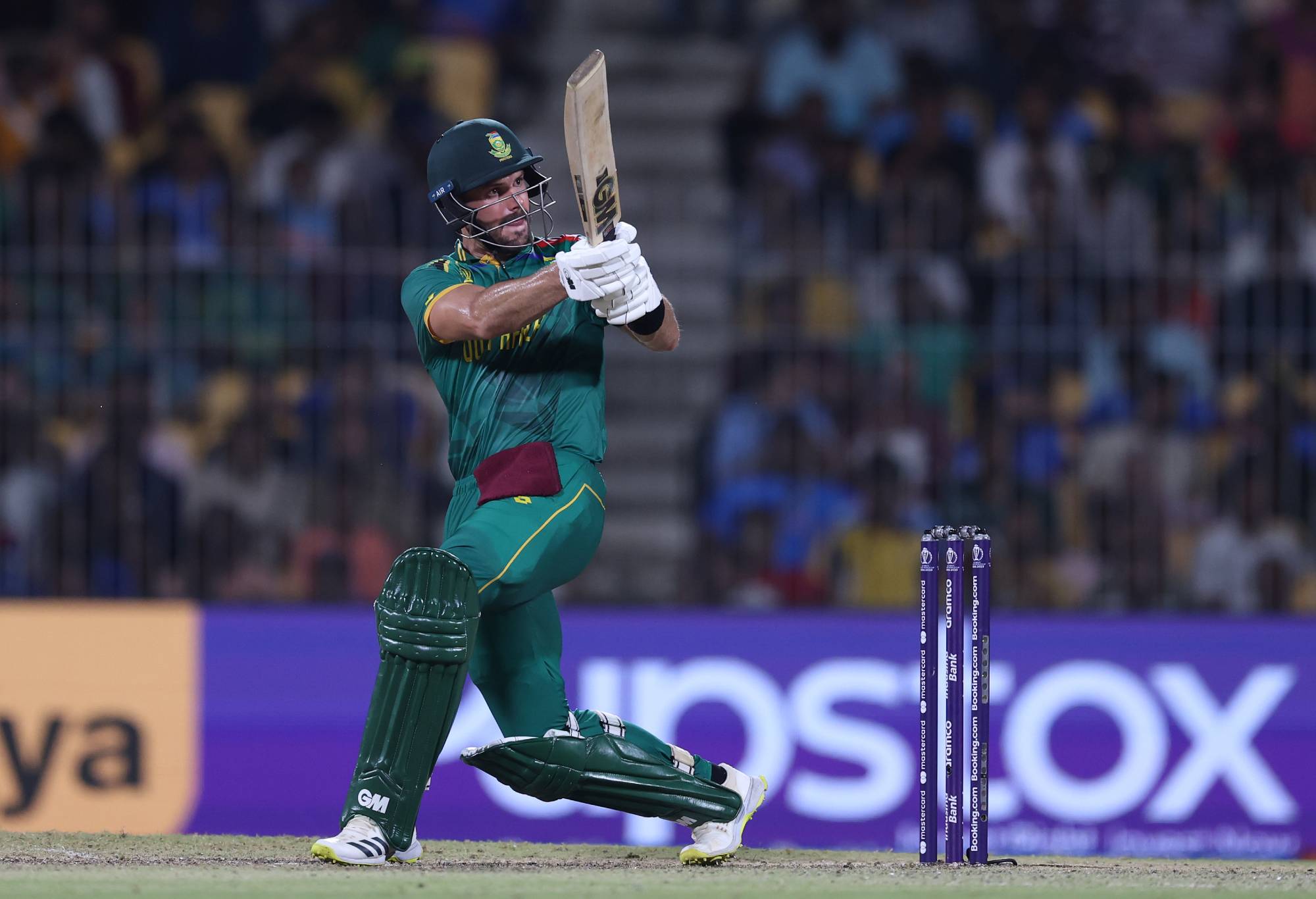As the T20 World Cup approached the halfway point of the first round group stages, I was planning to write an article for The Roar on the super-flops of the current World Cup; high profile players who had failed miserably.
With scores of 12, 0 and 4, batting in the vital first-drop position, Aiden Markram, the South Africa captain, seemed a certainty in my ‘elite’ team.

Aiden Markram. (Photo by Matthew Lewis-ICC/ICC via Getty Images)
Yet, here I am writing a piece on the 29-year-old batter for an entirely different reason. He came in to the match against the Tigers with only 12 runs in two innings, two catches and a run out (Scott Edwards, the Dutch skipper). Certainly, there was already considerable pressure to perform. Things started well for him here, as he won the toss. However, his decision to bat first seemed a dubious one, as Reeza Hendricks fell for a first ball duck in the sixth delivery of the match. Quinton De Kock, another batter seeking to find some form, hit a couple of sixes before becoming Tanzim Sakib’s second victim.
The pressure was on the captain to deliver. He was taking his time to get off the mark. That seemed ok, on this Adelaide made New York wicket – any score over 100 takes some chasing. Then came a flowing drive for four off Taskin; to the old timers like me, it brought back memories of Greg Chappell or Zaheer Abbas at their majestic best.
But, for Markram, that was it. Just moments later he was comprehensively bowled. As he walked back to the pavilion, I was seriously wondering why was given the captaincy of this star studded team. I searched for data in the net, and the question in my mind only got bigger.
His recent form in the T20 format of the game can be described as patchy. His last T20I fifty came way back in October 2022 at Perth, against India. Recently, he had a poor IPL playing for Hyderabad. In 11 matches he only managed 220 runs; his SR of 124 is very poor for a team that took attacking batting to a new level during the event. In fact, after joining SRH during the middle of the Covid affected 2021 season, he had enjoyed only one good season with them in 2022.
All these stats made me question even his position in the SA T20 team, especially when the likes of Rilee Rossouw can’t make the cut. To me, it seemed that just like Shakib, he is living on past glory. Yet, all my doubts turned into admiration during the 2nd half of the match.
Shrewd bowing changes combined with thoughtful field placings meant that the Africans always remained in the match despite a modest target of 114. The win predictor continuously changed as both teams fought for supremacy. With the match evenly balanced, in form Anrich Nortje was introduced in the eighth over, and he made an immediate impact. He started with fast, short pitched deliveries targeting the left handers body. This, no doubt, was a pre-planned strategy.
Shakib and Shanto both perished in quick succession; Markram taking both catches. Markram and his team got more than one favour from luck – but all good captains need these. The four leg byes denied by a dead-ball ruling has already been discussed here in The Roar. But, for me, it was the LBW decision against in form Towhid Hridoy that had a bigger impact on the game.
Hridoy has been a prolific run scorer in domestic cricket for sometime, but it’s only recently that he has started to perform consistently in the big pressure arena. I must confess that my initial reaction watching the umpires’ finger going up was that it was plumb; the leg stump was clearly visible as he was struck in front of the middle. But when the replay showed – the ball from Rabada had moved considerably off the seam, and the LBW decision only stood due to umpire’s call.

Kagiso Rabada celebrates after dismissing Tanzid Hasan. (Photo by Robert Cianflone/Getty Images)
Hridoy gone, controversially or not, but there was still hope for Bangladesh. 11 required from the last over, and Mahmudullah at the wicket. Strangely, Markram had already used up his quicks, so it was Keshav Maharaj with his gentle left arm spin to bowl the final over. Even more strangely, the captain put himself deep in the on side; the captain should be closer to the action, I thought.
He knew better than me. First he took a catch off the third delivery, and then with six required from two balls, a perfectly timed jump saw the end of Mahmudullah’s and Bangladesh’s hopes. In the context of high standard boundary line catches in modern white ball cricket, I would give a rating of B+ to that catch. But it was the situation of the match, that made it so special.
As SA won by four runs, I wondered whether Markram would be the man of the match for his four catches. Now, there was one famous incident at the SCG in December 1992. In a rain affected low scoring match (Aus 101/9 from 30 overs, WI 87 all out), Mark Taylor won the man of the match award for scoring nine runs (from 31 balls) and taking four slip catches. Taylor was also leading the Baggy greens in the match due to the absence of Allan Border. Paul Reiffel, who is officiating in the current World Cup, was the bowling hero taking 3-14.
Here, Heinrich Klaasen was deemed the MOTM, while Maharaj became the unlikely bowling hero despite bowling three full tosses in the final over.
For me, it was the South African skipper Markram, who was the real hero for his team.
